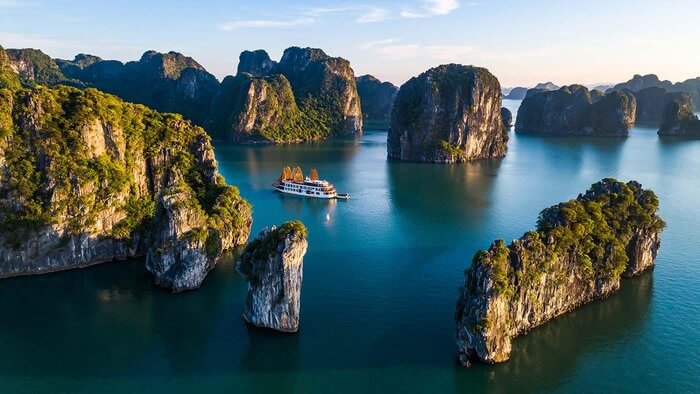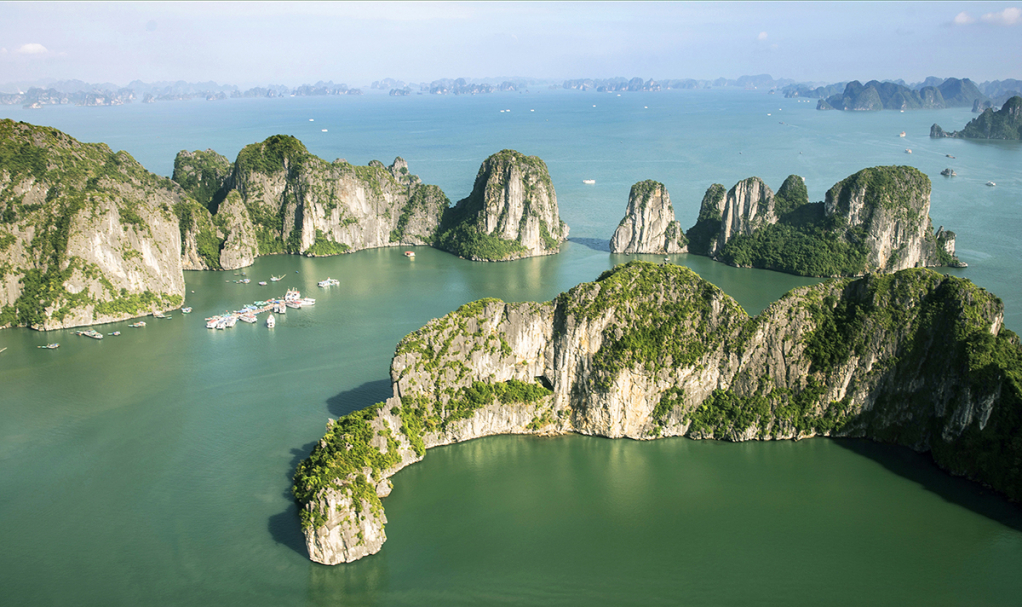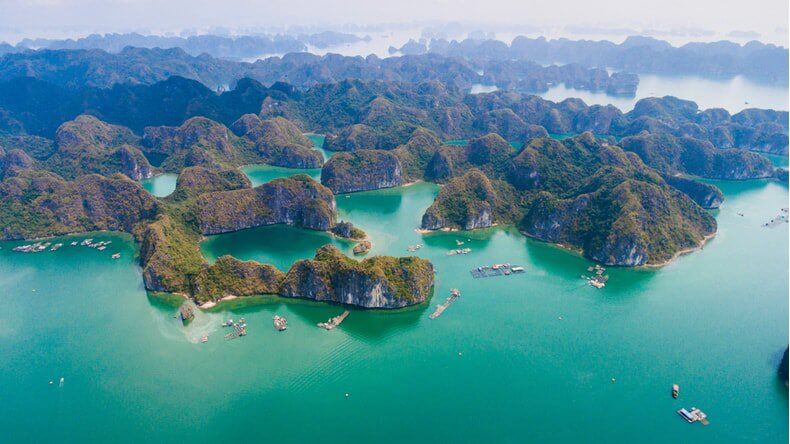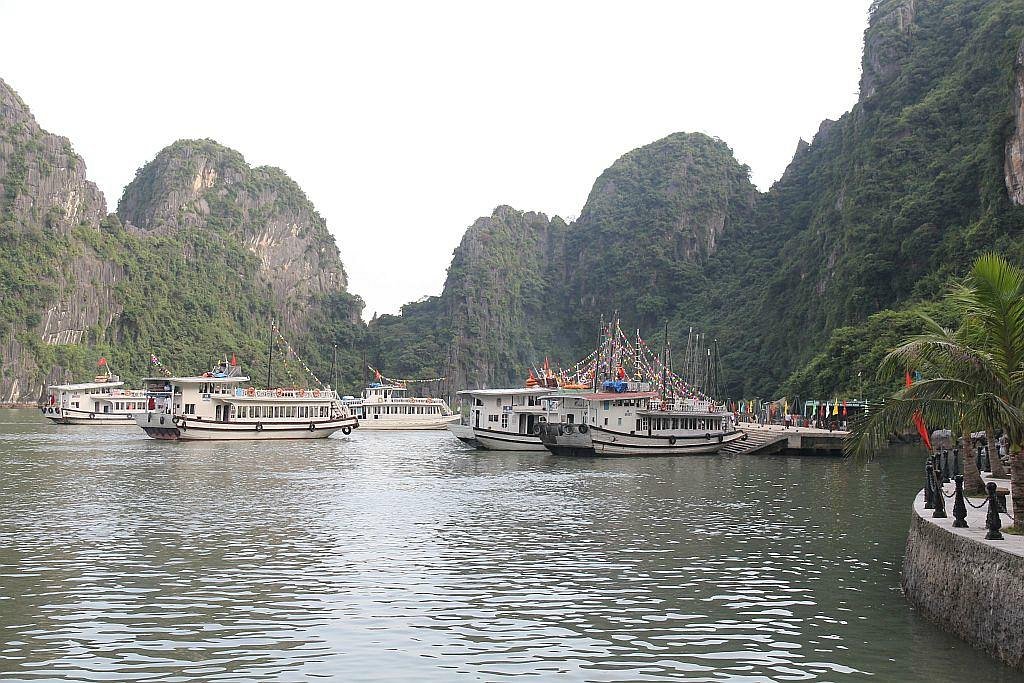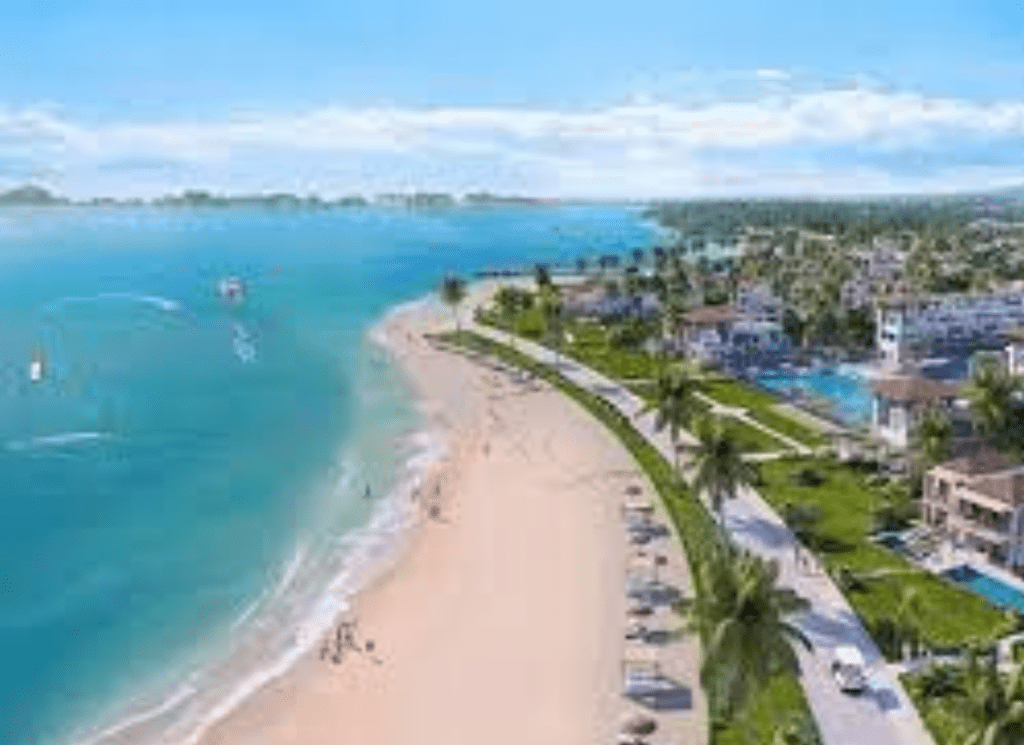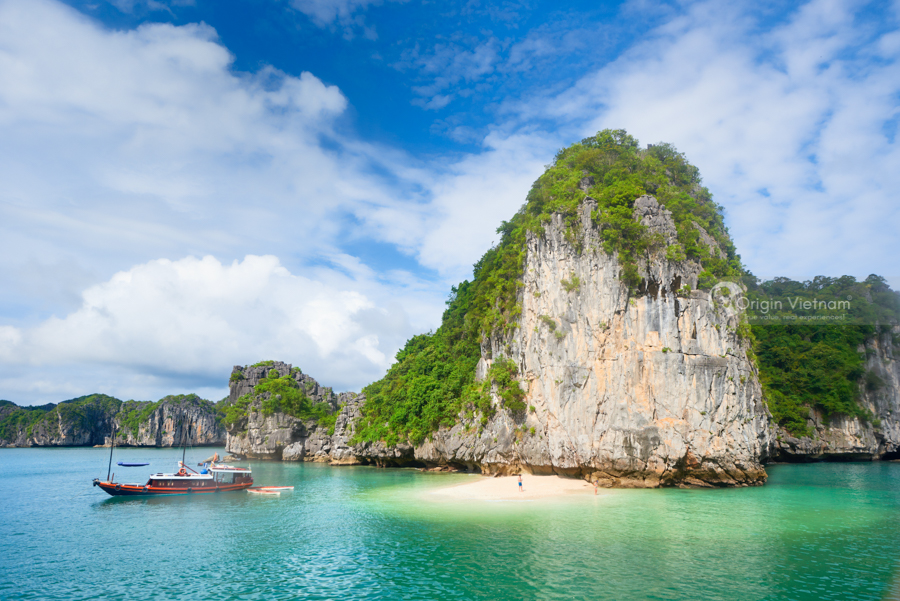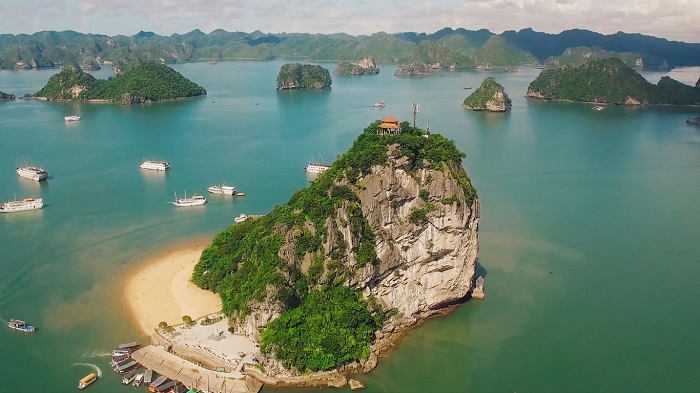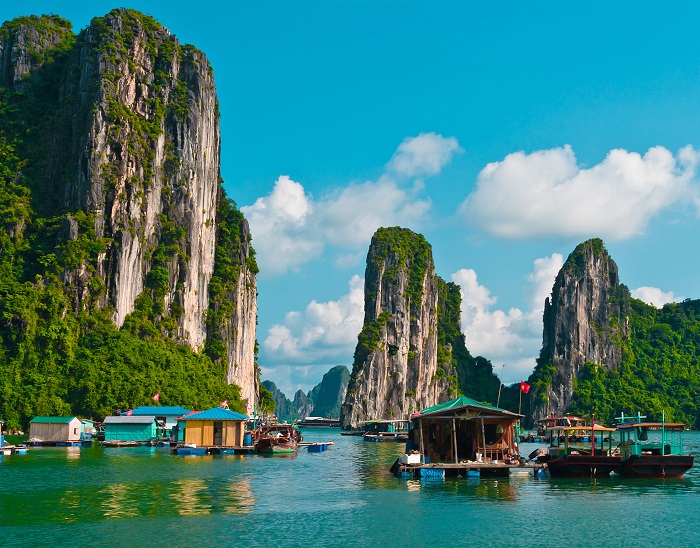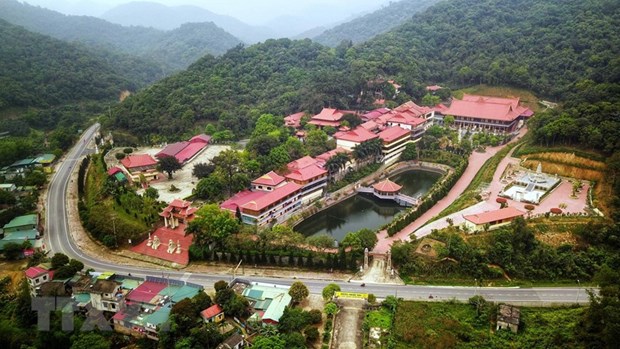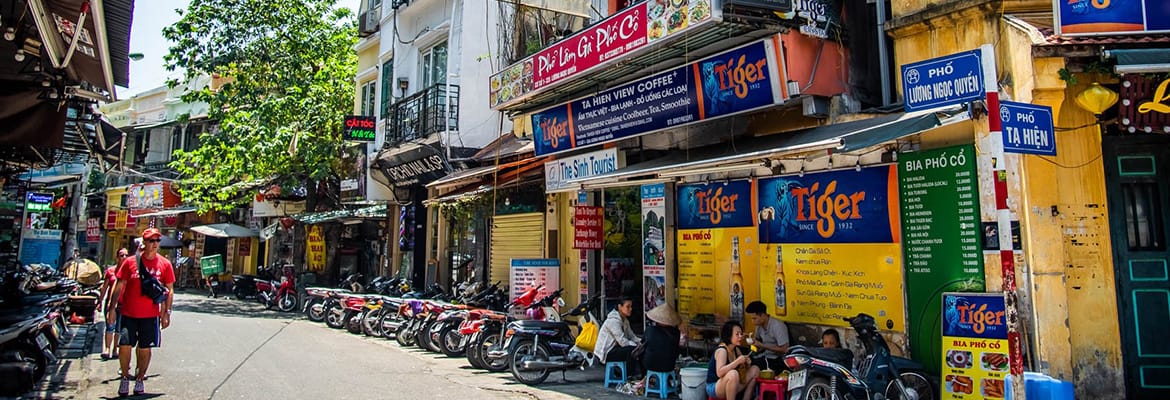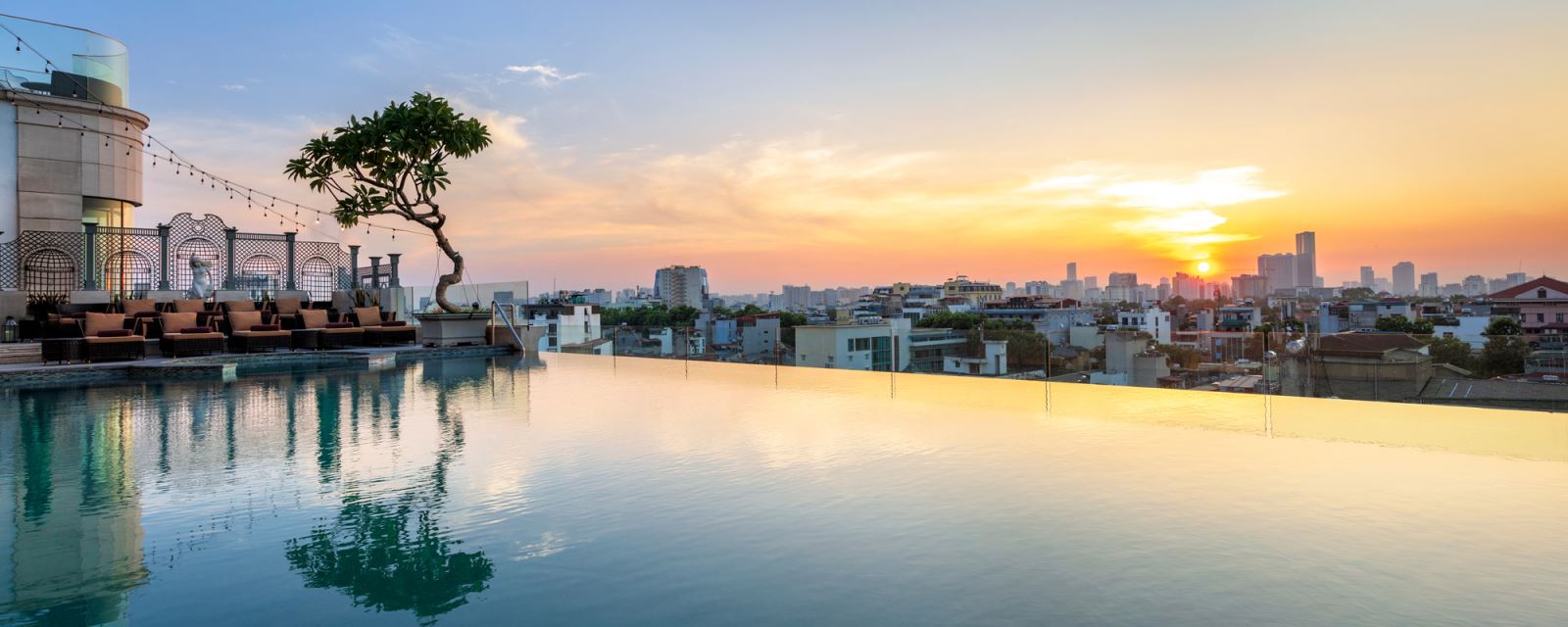Halong Bay is a well-known tourist destination in Vietnam. It’s situated on the western side of the Gulf in the Northeast Vietnam Sea. The bay boasts thousands of stunning islands, which are considered as marvellous creations of nature. UNESCO has acknowledged Halong Bay multiple times for being a natural heritage site. The beauty of Halong tourism lies in its picturesque views that attract both domestic and international tourists.
How Halong Bay Is Unique?
UNESCO has recognized Ha Long Bay as a World Natural Heritage twice due to its unique features. The bay comprises of 1,969 islands of various sizes which are concentrated in two chief zones; south-east and south-west.
Ha Long Bay was declared a World Natural Heritage by UNESCO in 1994 for its pure beauty and then again in 2000 for its geographic and geomorphologic values. This is because of the following reasons.
The Value Of Natural Beauty
Ha Long Bay covers a total area of 1,553 km², comprising of 1,969 islands of various sizes with 989 of them named. The islands are made up of two types of karst; limestone and schist and are around 250 to 280 million years old on average.
The national poet Nguyen Trai called Ha Long Bay, “A marvel of the earth erected towards the large skies”. Visitors can enjoy the beauty of stone islands that change shape depending on the angle and light. The islands have different names based on their shapes and forms such as Hon Dau Nguoi, Hon Rong, Hon Canh Buom, Hon Trong Mai and many more.
The beauty of Ha Long Bay doesn’t only lie in the types of its islands and the color of its waters but also in its rich system of grottoes and caves like Thien Cung, Dau Go, Sung Sot, Tam Cung, Trinh Nu, Thien Canh Son, Me Cung, Hang Luon and more. Each cave is a grandiose and refined natural architectural creation.
Value Of Geological
Ha Long Bay’s history in the last 1,000 years includes the advance of the sea, the rising of the bay region, and strong erosion that has formed pure and coral blue, salted water. The process of erosion by seawater has elevated the rock, contributing to its fantastic beauty.
Ha Long Bay is the result of a long process of evolution influenced by many factors. It’s because of all these factors that tourists visiting Ha Long Bay aren’t just treated to one of the true wonders of the world but also to a precious geological museum preserved in the open atmosphere for the last 300 million years
Value Of Biodiversity
Scientific research findings reveal that Ha Long Bay boasts of tropical ocean region ecosystems.
Like the ecosystem of coral reefs with 232 species of coral distributed mostly in the regions of Cong Do and Bo Hon. It’s also home to 81 species of Gastropoda, 55 species of Polychaeta, 130 species of Bivalvia and 57 species of crabs.
The ecosystem of saltwater flooded forests mainly concentrated in the areas of Tuan Chau area. It’s the most diversified collection of species of saltwater flooded plant in North Viet Nam.
Another ecosystem found in the Tuan Chau area is that of saltwater flooded forests, which have the most diverse collection of saltwater flooded plant species in North Vietnam. Here, one can find migrating birds, Polychaeta, seaweed, and reptiles among others.
The bay also has a tropical rainforest ecosystem with a wide range of rare species such as deer, weasels, squirrels, and notably, white-tabby and red-haired monkeys. The sea also has small caves that are home to aquatic plants, algae, fish, shrimps, and other animals and plants. Additionally, deeper into the water, there are various species of shrimp, fish, abalone, and other sea specialties.
Historical And Cultural Value
In Vietnam’s history, Ha Long Bay holds significant cultural value, with places like Van Don, Bai Tho Mountain, and Bach Dang River bearing geographical names linked to its past.
Ha Long has also been established by scientists as one of the earliest cradles of human existence in the area, evidenced by archaeological sites such as Dong Mang, Xich Tho, Soi Nhu, and Thoi Gieng.
Top Sightseeing In Halong Bay
1. Bai Tu Long Bay
Bai Tu Long Bay is made up of many large and small islands, with many of them being uninhabited. It is an attractive destination that can rival Halong Bay in beauty. The highlight of this bay is the variety of marine eco-tourism activities available, including beaches and caves. Bai Tu Long National Park is also located here, which boasts a diverse array of flora and fauna.
2. Lan Ha Bay
Located in the south of Halong Bay, Lan Ha Bay features over 400 islands, all of which are covered in trees, creating some interesting shapes. With a cool climate throughout the year, it’s known as a “sleeping paradise”. Although its beauty rivals that of Halong Bay, tourism has only recently begun to develop here.
3. Soi Sim Island
Soi Sim Island is situated in the west of Ha Long Bay and covers an area of 8.7 hectares. A primaeval forest with abundant and varied plant life can be found on the island, with many Sim trees growing there, hence the name “Soi Sim”. Tourists are also drawn to Soi Sim Beach, which offers beautiful views.
4. Tuan Chau Island
Tuan Chau Island is rated as the most beautiful out of nearly 2000 islands in Halong Bay and is one of the most popular tourist destinations in the region.
5. Bai Chay Beach
As the largest beach in Halong City, Bai Chay Beach attracts many tourists with its artificial coastline that stretches over 1000 meters and is more than 100 meters wide. The beautiful, clean beaches and blue waters are complemented by an endless line of pine trees along the coast, creating a refreshing and peaceful atmosphere.
6. Co To Island
Co To Island is located in the northeast of Vietnam and boasts stunning natural scenery that elicits unexpected emotions. It features unspoiled sedimentary rock formations, beautiful white sand beaches, walking paths through the primeval forest, delicious fresh seafood, sincere and hospitable locals, and plenty of outdoor activities. A trip to Co To promises dreamy experiences that allow visitors to fully immerse themselves in nature.
7. Dragon Eye Island
Dragon Eye Island is situated in the south of Halong Bay, adjacent to Bai Tu Long. This island boasts natural white sand beaches and a unique landscape featuring a beautiful circular formation in the middle of the mountain. It’s an ideal location for a private family trip to Vietnam.
8. Quan Lan Island
Quan Lan Island, located about 55 km from Ha Long City, attracts tourists with its green and pristine space as well as historical and cultural relics. It marks the glorious feats of our forefathers in the fight against invaders. The island is also home to famous beaches such as Son Hao and Chan Tien.
9. Cat Ba Island
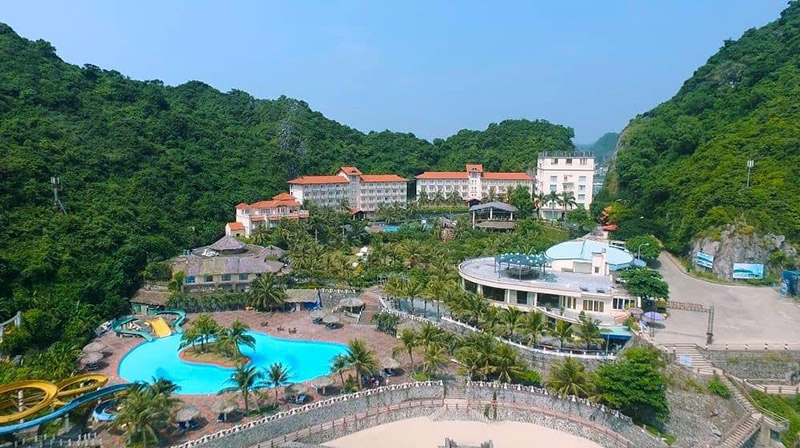
The stunning scenery of beautiful white sand beaches and limestone cliffs jutting out of the water will take your breath away. Cat Ba Island is also renowned for adventure activities such as climbing Hon Tilt, trekking National Park, and unprotected cliff climbing.
10. Ba Trai Dao Beach
Ba Trai Dao Beach is a popular spot in Halong Bay, located about 22 km southeast of Bai Chay Tourist Port near Cat Ba Island. This beach is famous for its clean, wild, and charming atmosphere, but visitors should be cautious of convection currents in the water. The beach is only accessible for swimming 2-3 hours per day and when the tide gets high, the sandy area is engulfed by the sea.
Read more >> Hanoi escapade discovering the heart of vietnam
11. Ti Top Island
Ti Top Island is located in the middle of Halong Bay and features about 400 steps leading from the beach to the top viewing tower. Visitors can admire the beauty of Halong Bay at different heights. Despite boats anchoring in the area, Ti Top Island remains a tranquil destination with a refreshing and spectacular view of the bay.
12. Sung Sot Cave
Sung Sot Cave is considered one of the “legendary” tourist destinations in Ha Long Bay. It’s the most famous cave in the area, and unlike Phong Nha-Ke Bang, visitors can admire the splendid cave through 100 stone steps that lead to different spaces with stunning geological wonders that will overwhelm them. The deepest part of the cave is called the “royal garden,” where visitors can find a clear lake with extremely rich flora and fauna.
13. Dau Go Cave
Dau Go Cave, located in Ha Long, is believed to be the largest limestone cave with a width of 12m and an entrance of about 17m high, almost 2 million years old. Upon entering the cave, tourists are amazed by the photographic art photos taken by photographers, showcasing the vibrant colours of light reflected from the stalactites. It feels as if one has entered the realms of paradise.
14. Drum Cave And Trinh Trinh Cave
Drum Cave and Trinh Trinh Cave are located on the wings of a small mountain arc east of Bo Hon island, approximately 3km southeast of Sung Sot cave along the sea. Visitors can hear the story behind these two caves: one with a horizontal rock resembling a girl lying with her hair stretched out to the sea, known as the Virgin cave, and the other with a very tall stalactite column resembling a giant boy standing looking out to sea. On rainy days, visitors can hear the sound of the wind hitting the cliffs like drums, hence the name Drum Cave.
15. Luon Cave
Ha Long boasts a vast cave system, each with its own unique beauty. One such cave is Luon cave, situated on Bo Hon Island, approximately 14km from Bai Chay. Here, tourists can see stalactites in various shapes and sizes, formed over millions of years.
16. Thien Canh Son Cave
Thien Canh Son cave is a wild cave located on Bai Tu Long Bay and Ha Long Bay in Cong Do conservation area. The natural beauty of the pristine limestone stalactites, coupled with the surrounding landscape, make it an interesting attraction for tourists to visit.
17. Thien Cung Cave
Located near Dau Go cave, Thien Cung cave boasts a mouth measuring 25m high, making it one of the most beautiful caves in Ha Long. It spans nearly 10,000m2, with a complex structure including multiple levels and compartments featuring extremely high and wide ceilings and walls. Tourists are awed by the countless blocks of stalactites and stalagmites with impressive shapes found within the cave.
18. Kim Quy Cave
Kim Quy Cave stretches over 100 meters, running from North to South. Facing Dam Bac island in front and Soi Sim island at the back, the cave is adorned with stunning stalactites and stalagmites of various colors cascading from the ceiling, creating an otherworldly and breathtaking scene.
Read more >> Discover the ancient Town of Hoi An
19. Cua Van Fishing Village
Cua Van fishing village is renowned as one of the most famous fishing villages in the region. It sits on calm waters and is home to 733 people living in 176 households.
The charm of the village resides in the small houses huddled together against storms. Visitors can witness the daily life of fishermen and enjoy a remarkable view of the ocean right beneath their boats, making it an unforgettable experience.
20. Vung Vieng Fishing Village
Located in Tu Long Bay area, Vung Vieng fishing village is smaller than Cua Van. It houses around 50 households with a population of 200-300 people.
21. Ba Hang Fishing Village
Ba Hang fishing village is another popular fishing village that attracts visitors to Ha Long. Its idyllic setting amidst mountains and countryside offers tourists a glimpse into the life of fishermen.
22. Bai Tho Mountain
Bai Tho Mountain is a magnificent limestone mountain towering over 200 meters high in the heart of the city. The view from the top showcases a panoramic and stunning landscape of Ha Long. Along the way up the mountain, visitors can capture pictures of free-grazing goats and birds fluttering over the bay. Remember to bring a fully charged camera!
23. Yen Tu Relics
Yen Tu is one of the most famous pagodas in the North, comprising of a system of pagodas, towers, and ancient trees blending with natural scenery scattered from Red slope to Yen Tu mountain, gradually increasing in height.
24. Cai Bau Pagoda
Cai Bau Pagoda, also known as Truc Lam Giac Tam Zen Monastery, was inaugurated in 2009 and is located near Bai Dai – Van Don tourist area. The serene atmosphere created by the temple bells and the sound of waves adds to its sacred ambiance.
Activities you should definitely try in Halong Bay
1. Sun Wheel And Queen’s Cable Car
The highest suspension tower in the world (188.88m) recorded by the Guinness Record belongs to the Queen’s Cable Car, which connects Bai Chay to the top of Ba Deo Hill. Visitors can admire the marvellous nature of Ha Long Bay from this great location.
2. See Ha Long By Seaplane
To offer an additional service and bring more excitement to tourists visiting Ha Long Bay, seaplanes were introduced. From an altitude of 150 to 3000m above sea level, sitting on a seaplane, you can watch the panoramic view of the beautiful bay.
3. Play Adventure Games In Dragon Park
Dragon Park offers challenging adventure games even for the bravest visitors. Shouting and overcoming your fear while participating in these games is also an unforgettable experience that visitors should try.
4. Kayaking
Kayaking is a very popular sport in Ha Long Bay. If you visit Ha Long and skip this experience, it will be extremely unfortunate for you. Rowing the oars on the emerald green water, sitting on a small Kayak boat, and watching the magnificent mountain river, visitors can enjoy the absolute peace of nature.
5. Climb The Mountain
Ha Long Bay is not only known for kayaking but also for its diverse and rugged terrain, including many islands and mountains that present a challenge for those who love climbing. Spikey cliffs, majestic corners, cliffs, and caves in Halong Bay will challenge visitors who love climbing.
6. Spend Overnight On A Cruise Halong
There are many types of cruises available in Ha Long Bay, each with different costs depending on the cruise type and length of stay. Day cruises start at $50 USD per person, while longer stays are more expensive. The cost also varies depending on whether you choose a shared or private cruise. The price of the room on a cruise is based on the chosen cruise name, ranging from around $100 to $500 USD per person or even more expensive. Booking Vietnam tour packages that include Ha Long Bay can help save time and money.
Choosing the right quality of your cruise can make a big difference in your experience.
If you’re on a budget, a 3-star quality cruise can still offer a great experience without breaking the bank. However, if you’re looking for ultimate luxury and service, a 5-star quality cruise may be worth the splurge.
Whether you choose a budget or luxury option, you can still enjoy the stunning beauty of Ha Long Bay.
You may also want to check out >> Exploring the Mekong Delta: A River Journey
When Is The Best Time To Visit Halong Bay?
Winter, spanning from November to Tet, is a favored season for foreign tourists visiting Ha Long. On the other hand, domestic tourists tend to flock there during the summer months of May to July. It is common for vacations to revolve around a visit to Ha Long Bay, particularly during this time when students are on break and embark on family trips.
Autumn, ranging from August to October, is widely regarded as the optimal period to explore Ha Long. Additionally, May 4-5 showcases the exceptional beauty of Ha Long Bay.
Ha Long Bay is adorned with captivating beauty during the autumn season. From September to November, the weather in Ha Long is typically sunny, providing an ideal opportunity to enjoy the bay.
The temperatures are not excessively cold, allowing for pleasant swimming experiences in the sea. Moreover, this period is characterized by fewer storms, unlike June and July when the northern region often encounters stormy weather.
During rainfall, the bay’s landscape may appear more austere, and there is a possibility of restrictions on sea travel and overnight stays on the bay for the safety of tourists.
How To Get There to Halong ?
Traveling from Hanoi or Saigon to Ha Long:
What is the distance between Hanoi and Quang Ninh? It is approximately 170km from Hanoi, and the travel time to Ha Long by car is around 3-4 hours. There are various transportation options available for the journey from Hanoi to Ha Long:
Hanoi Limousine is the preferred choice for many travelers due to its convenience and reasonable pricing. The Limousine service continuously upgrades and innovates, ensuring top-notch vehicles and service quality.
Initially, they offered pickup and drop-off at designated locations, but now they also provide the option for home pickups and drop-offs upon request. Operating from 4:30 am to 9 pm every day of the week, the Limousine service offers approximately 30 trips per day between Hanoi and Ha Long, catering to the needs of commuters.
By Car: To reach Ha Long by car, you can find car services at My Dinh and Luong Yen bus stations. The first departure is at 6 am, and the final one is at 5 pm. The journey typically takes around 5-15 minutes to reach Bai Chay bus station in Ha Long. Ticket prices range from 100k/person for seats and 200k/person for beds.
Ha Long by Motorbike: There are two routes you can take from Hanoi to Ha Long by motorbike:
Route 1: From Hanoi, follow Road 5 to Sai Dong junction, then proceed to Bac Ninh. From Bac Ninh, take Road 18 through Pha Lai, Chi Linh, Dong Trieu, Uong Bi, and finally reach Ha Long. The total distance for this route is approximately 155km.
Route 2: Starting from Noi Bai Airport, head towards Bac Ninh and take Highway 18A, passing through Pha Lai, Sao Do, Dong Trieu, Uong Bi, and eventually reaching Ha Long. The total distance for this route is about 160km.
Both routes offer scenic views and a chance to enjoy the journey before arriving in Ha Long.


